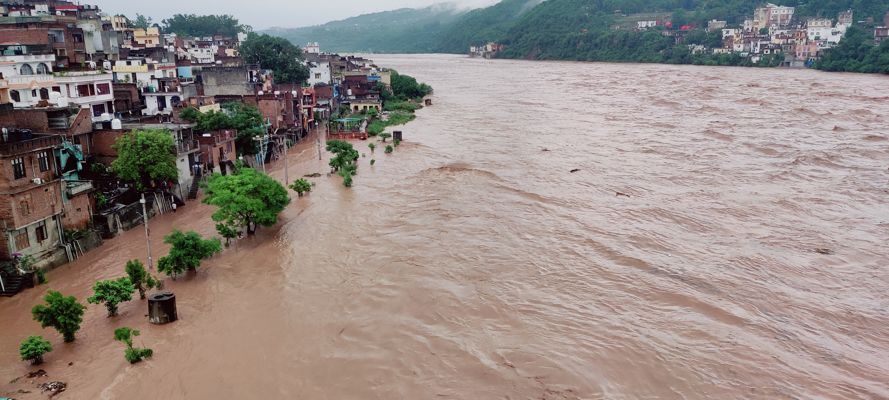Jammu Division has witnessed unprecedented rains in the last 24 hours, creating a flood-like situation in many districts. The heavy rainfall, extensive damage, and the forecast for further rainfall throughout the week indicate a need for immediate and comprehensive preparedness by the Administrations. Given the recent crisis in neighbouring Himachal Pradesh, all districts should be fully prepared for the worst-case scenario. This includes ensuring that all necessary measures are in place, such as the readiness of the NDRF and UT Disaster Management Teams to respond promptly, even during odd hours. Immediate inspections of all bridges should be conducted to prevent any untoward incidents.
Given the closure of NH44 and the occurrence of landslides and mudslides in various places, the administration must prioritise the safety of residents. The closure of schools and colleges, as well as the advisory issued by the Katra administration to remain indoors, show the gravity of the situation. Precautions should be taken to inform people residing in low-lying areas. Special attention should be given to those living in mud houses on vulnerable hills, and they should be relocated to safer places. The relocation of Gujjars and nomads with their livestock, especially those near rivers or rivulets, is essential to protecting their lives and the lives of their animals.
With the forecast of moderate to heavy rains throughout the Jammu Division, time is of the essence. District Administrations should make temporary arrangements available immediately to facilitate the swift evacuation of people in low-lying areas in case of any emergency. It is crucial to prioritise the well-being of the affected population and provide them with all necessary assistance during this crisis. This is a challenging and critical situation for the District Administrations to take immediate and proactive steps.
Adequate shelter facilities must be made available for the stranded Amarnath Yatris, ensuring they have a secure and comfortable place to stay until the situation improves. For the pilgrims on the Shri Mata Vaishno Devi Ji track in Katra, it is important to provide guidance and support throughout their yatra. Constant monitoring and coordination with the yatra management authorities and local stakeholders are vital to addressing any inconveniences or unexpected situations that may arise during the yatra. It is crucial to have a contingency plan in place to manage unforeseen circumstances and ensure the safety and comfort of the yatris.
In a situation like this, the traffic police must take precautionary measures and maintain vigilance at waterlogged crossings and localities. Proper traffic diversion plans must be implemented to prevent long jams and ensure the smooth flow of vehicles. Diverting traffic towards Udhampur and other districts in that direction, as necessary, can help avoid congestion on alternative routes such as the Border Road being used to redirect traffic towards Jammu. Additionally, it’s important for the police, with the assistance of residents, to safeguard the banks of rivers and bridges from individuals who may be seeking photo opportunities. Such measures will help prevent any unfortunate incidents. Public cooperation with the administration is vital in providing shelter and relief and maintaining self-discipline during this challenging time.
The Jammu Municipal Corporation, along with other municipal committees, has a significant role to play in this situation. Their teams, comprising personnel and machinery, should be mobilised to unclog drains in low-lying areas and ensure proper drainage. Similarly, the Flood and Irrigation Control Department should diligently inspect and maintain the banks to prevent any breaches.
Coordination and collaboration among all departments are paramount during this crisis. Each department must work in tandem to ensure a comprehensive and effective response. By taking these collective measures, the administration, police, public, and various departments can work together to mitigate the impact of the floods and safeguard the well-being of the affected population.
Trending Now
E-Paper


